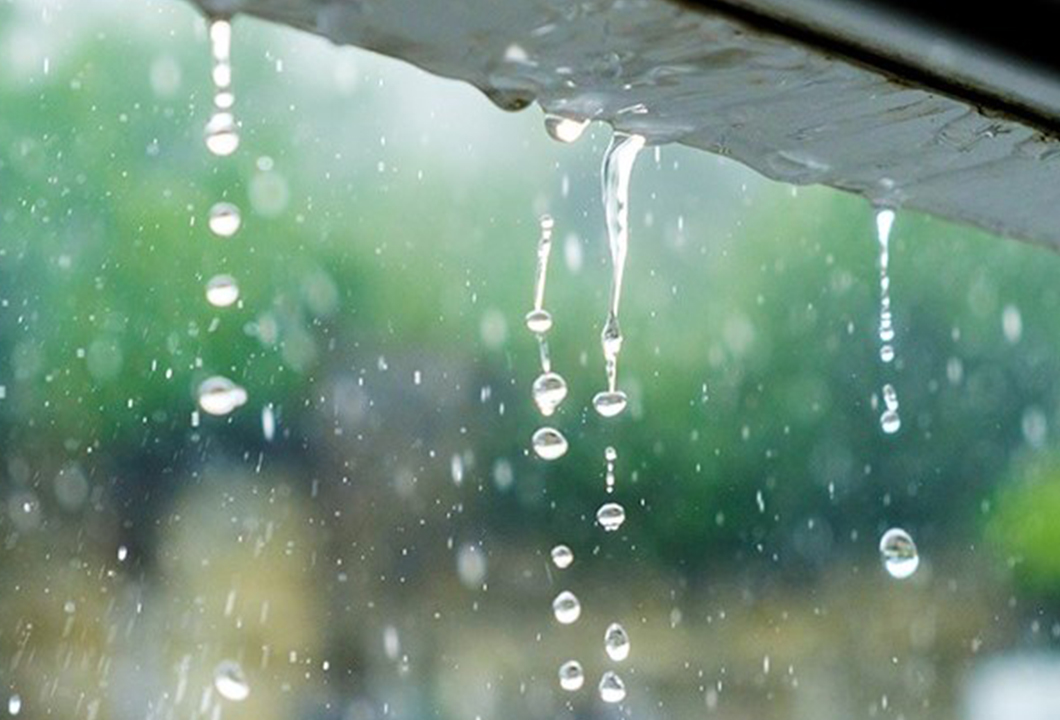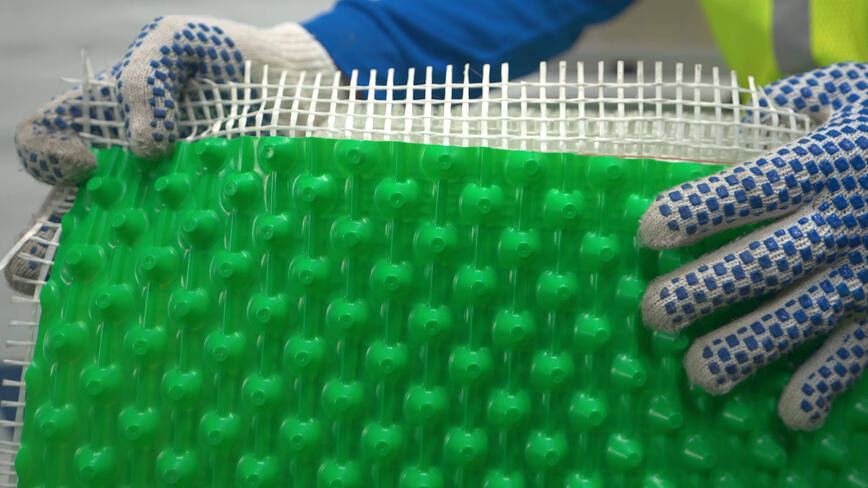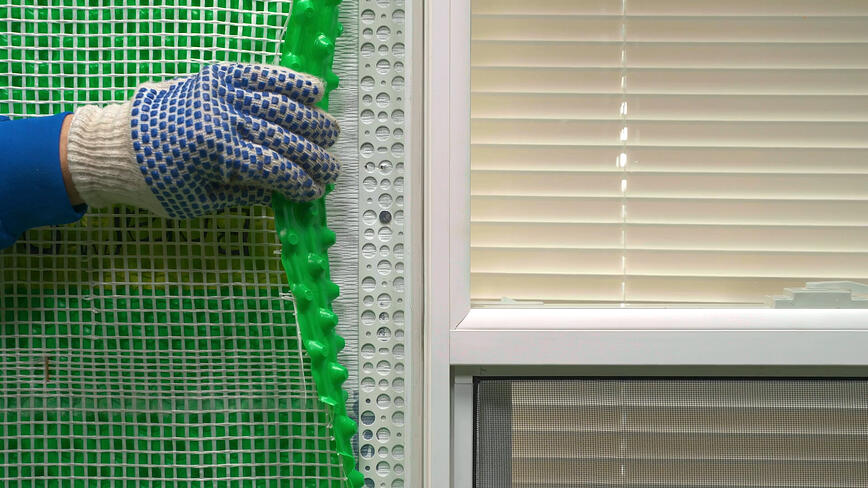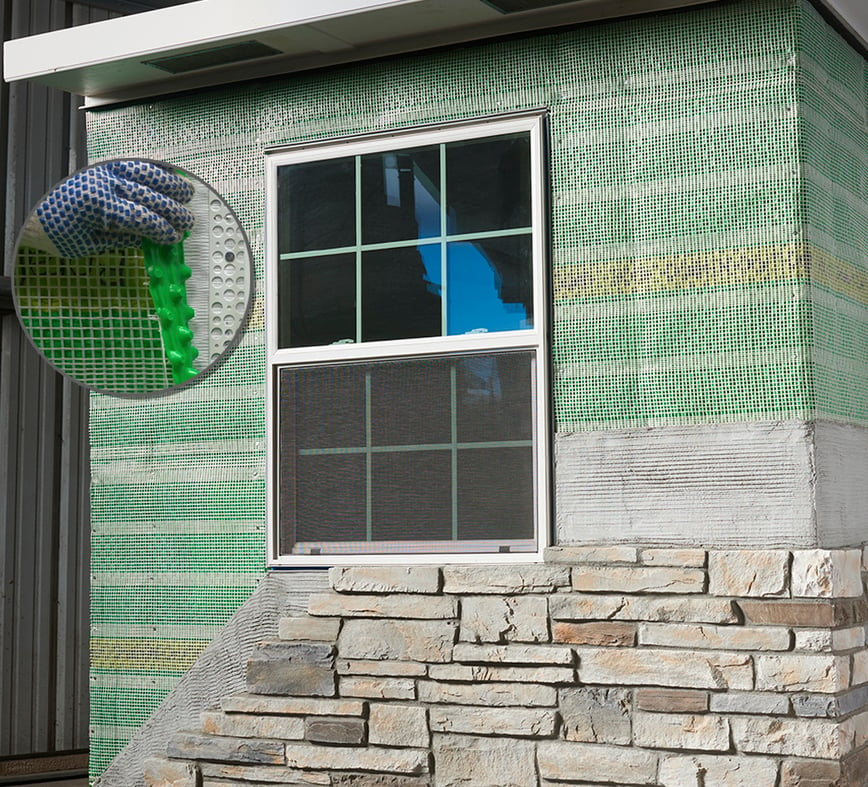
Avoid Stone Veneer Failures: Get up to Speed on Building Code Requirements for Rainscreen
Published:
Last Updated:
Author:
For a contractor living in the Eastern half of the U.S. or along the West Coast states, you know the issues you can have with moisture getting into your projects. Rain and humidity can wreak havoc on stone veneers when any bit of moisture settles in behind the masonry and causes a leak or mold situation.
For that reason, the International Building Code passed a requirement for the incorporation of a drainage plane behind stone systems. Frequently referred to as “rainscreen,” this space or drainage material needs to be no less than 3/16 inch depth behind the stone. Rainscreens are available in a range of materials including entangled mesh and plastic or foam products with drainage avenues.
Dell Nolt, field service representative of Westlake Royal Stone Solutions recently provided an educational workshop to professional contractors in order to educate them on this new requirement. He covered the official code, where contractors can find its official language, why it’s important, the materials on the market that are compliant with the code and how to install it.
According to the code, adhered masonry veneer will follow the 2018 Section R703.12. Its installation will refer to the 2021 Exterior Plaster section:
- R703.71—installation of lath and all accessories
- R703.7.3—water-resistive barrier including a rain screen drainage space
Best practices to achieve this rainscreen include:
Nolt says there is often a lack of education in the industry when a new code requirement comes out. Contractors just aren’t hearing about it. He hopes Westlake Royal Stone Solutions can be a resource, informing the industry on how to stay compliant with installations.

“We’re trying to help you protect your business so you can utilize this information and pass it on to your clients,” Nolt explains. “As an industry, we want to make sure we’re doing the best thing for our clients so they can enjoy the longevity of the product and it performs as it’s designed to.”
He adds that it’s not hard to understand the logic behind the code. “If you Google stone veneer failure, it doesn’t take long to see a lot of horror stories about drainage issues and stone systems that have leaked for various reasons. We need great moisture management behind these systems to prevent bulk water intrusion or any other capillary failure that results from moisture getting trapped behind the stone system. It eliminates the potential for mold remediation or leak remediation.”
Moisture management is not something new. Nolt says that most contractors are already doing exactly what the code requires and the code is really just catching up with the science that’s been around for a while. “It’s not just unique to stone veneer. If you’re in the exterior cladding business, whether that be stone, cement, board siding or other types of veneer, moisture management is super important,” he says. “The code just makes sure that the industry addresses it from a universal standpoint.”

While this new International Building Code came out in 2021, Nolt says there is always some lag time in the adoption process. Pennsylvania was the first state to adopt the process but it’s required in all states that fall into the moisture zones on the climate map. This is Moist Climate A, which includes the Eastern half of the U.S. via a line split down Minnesota through the center of Texas and Marine Climate Zone C, which runs along the West Coast and Pacific Northwest including Washington and the California coast. The only states not requiring this code are in Dry Climate Zone B, which includes Nevada and Colorado.
While adding an extra step is not something contractors always want to hear, Nolt says it’s not really that much additional work or monetary inconvenience. “We’re talking about an ancillary type of product. The cost is not significant; it’s really just a few cents on a square foot. The significant cost comes if there is a failure of the product if moisture gets in. So this is really a kind of cheap form of insurance to prevent that.”
There are already products on the market to help contractors address the code and with the new requirement, Dells predicts more products will become available as the demand increases. One product already available is made by Cultured Stone, called Drain-N-Dry™, a pre-rainscreen material that provides moisture drainage, and it has an added feature many others do not provide.
“It has some technology behind it to address air circulation behind the wall system. It creates some airflow to become a ventilated type of system for moisture drainage,” Nolt explains.

For contractors looking for information or solutions to comply with the code requirement, they can contact Instone.
As the old saying goes: An ounce of prevention is worth a pound of cure.” By adhering to the code and adding a rainscreen to stone veneer projects, it helps the industry as a whole ensure against moisture damage and have many happy customers with beautiful stonework on their homes and commercial properties for years to come.